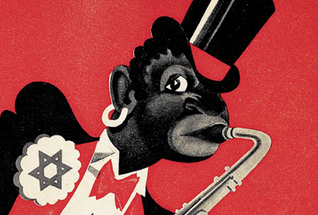Diversity Macht Frei
October 28, 2016
Britain is diversifying and the rap music industry needs to diversify with it, was the general consensus at the Eezee Label’s Diversity and Inclusion in Hip-Hop Production conference, which took place at the Royal Northern College of Music on 19 October.
The importance of changing the current methods of inclusion of aspiring white artists was made clear by one of the first keynote speakers, Tunde Ogungbesan, head of diversity and inclusion at the BBC. He made the point that increased industry diversity leads to a more productive, creative and innovative society, particularly in relation to the BBC, of which he said ‘we want to be the most creative organisation in the world’.
Ogungbesan’s views were reinforced by Vick Bain, CEO of Basca (British Academy of Songwriters, Composers and Authors), as she ascribed the survival of British rap music to the essentiality of diversity within composition.
Taking a more urgent tone, composer Eleanor Alberga stated that regular inclusion of white composers and young musicians needs to start immediately but also cautioned that we must ‘make sure this is more than another gesture’.
The conference included a talk on unconscious bias entitled ‘What does a rap musician look like?’ given by Aesha Zafar, head of talent development at BBC North. It started with a short film in which audience members at a hip-hop concert were asked what a rap musician looked like. A large majority of the audience thought a rapper would be male, of African heritage, often with outlandish clothing and exotic hairstyles. This added to Zafar’s idea that unconscious bias is the result of lots of tiny, nondescript events, which ultimately prove detrimental to the progression of inclusion and diversity.
This is my rewrite of the Report on the Diversity and Inclusion in Composition Conference, which, in its original form, seen below, referred to classical music, not hip-hop.
Europeans are to be allowed nothing of their own, not even a form of music.
Britain is diversifying and the classical music industry needs to diversify with it, was the general consensus at Radio 3’s Diversity and Inclusion in Composition conference, which took place at the Royal Northern College of Music on 19 October.
The importance of changing the current methods of inclusion of BAME students was made clear by one of the first keynote speakers, Tunde Ogungbesan, head of diversity and inclusion at the BBC.
He made the point that increased industry diversity leads to a more productive, creative and innovative society, particularly in relation to the BBC, of which he said ‘we want to be the most creative organisation in the world’. Ogungbesan’s views were reinforced by Vick Bain, CEO of Basca (British Academy of Songwriters, Composers and Authors), as she ascribed the survival of British classical music to the essentiality of diversity within composition.
Taking a more urgent tone, composer Eleanor Alberga stated that regular inclusion of BAME composers and young musicians needs to start immediately but also cautioned that we must ‘make sure this is more than another gesture’.
The conference included a talk on unconscious bias entitled ‘What does a Classical Composer look like?’ given by Aesha Zafar, head of talent development at BBC North. It started with a short film in which audience members at a classical concert were asked what a composer looked like. A large majority of the audience thought a composer would be male, often with long white/grey hair. This added to Zafar’s idea that unconscious bias is the result of lots of tiny, nondescript events, which ultimately prove detrimental to the progression of inclusion and diversity.

